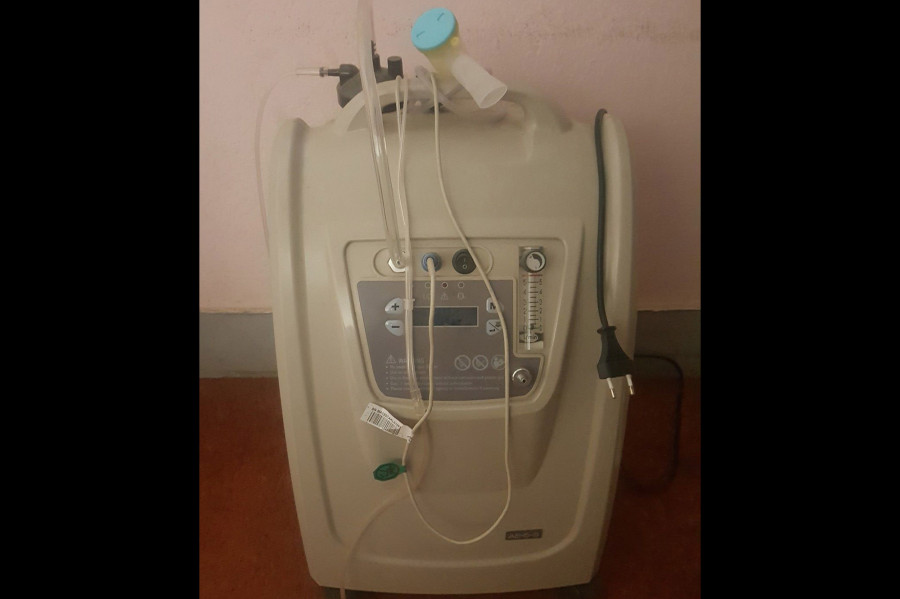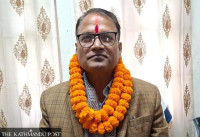National
Government aims to equip districts with oxygen concentrators, but supply not enough
Oxygen concentrator banks to be set up in districts to address existing and potential shortages in the event of a third wave of the pandemic.
Prithvi Man Shrestha
Although the government has introduced a policy of maintaining a stock of oxygen concentrators sufficient for 20 percent of the hospital beds in each district to avoid oxygen shortage, officials say the existing supply of the equipment to districts may not be enough to meet the threshold.
As per the ‘Guidelines for the Establishment and Operation of Oxygen Concentrator Bank’ unveiled by the Health Ministry on Sunday, a bank of oxygen concentrators will be established in each district.
The oxygen concentrator bank has been envisioned as a store to manage the demand, supply, collection, distribution and management of the equipment. The government plans to establish such banks as buffer stock at the Department of Health Services, Provincial Medical Supply Management Centre and District Public Health Offices.
“The threshold was fixed at 20 percent considering the demand for oxygen at hospitals during normal times,” said Krishna Prasad Paudel, spokesperson at the Heath Ministry. “But, the existing supply of oxygen concentrators may not be enough for meeting this threshold at all the hospitals.”
He said the oxygen concentrator banks would help the authorities to address urgent needs for oxygen at hospitals. “The policy aims to address the existing and potential shortage of oxygen in the event of a third wave of the pandemic,” he said.
The Department of Health Services had distributed 2,957 oxygen concentrators of different capacities to the various provincial logistical centres by June 16. But, officials said they are not sure about how many oxygen concentrators would be required to meet the 20 percent threshold.
Oxygen concentrator is an equipment that takes in air from the atmosphere, separates the oxygen and supplies it to the patient. These concentrators, however, aren’t of much help for serious patients requiring high-flow oxygen, but they are helpful for moderately ill patients.
Dr. Bhim Singh Tinkari, director at the Management Division under the Department of Health Services said that the department supplied medical goods including oxygen concentrators to around 650 hospitals and health care facilities.
“Around 800 government-run hospitals and health centres had requested us for health equipment and supplies. We have yet to respond to the requests of 150 of them,” he said.
The government move to establish the oxygen concentrator banks was prompted by the possibility of a third wave of the pandemic and the shortage of oxygen experienced in April and early May in the run up to the peak of the pandemic’s second wave, which saw thousands of deaths as hospitals and health facilities were overwhelmed by patients.
The government, which failed to prepare for the worst scenario, sought domestic and international support for oxygen cylinders, concentrators and oxygen plants.
Even though the government failed to purchase any oxygen-related supplies during the second wave, the country received a sizable aid of oxygen cylinders, oxygen concentrators and oxygen plants from the foreign countries, donor agencies, domestic and international non-governmental organizations, private sector, Nepalis diaspora among others.
According to the Department of Health Services, the country received 3,250 oxygen concentrators of different capacities from domestic and international agencies as of June 16. Besides oxygen concentrators, Nepal has also received oxygen plants, cylinders and other medical goods and kits from various government and non-governmental entities.
The government has already instructed hospitals to reserve at least 20 percent of their beds for children below 18 years, amid speculations that children will be more affected by the third wave as they are not vaccinated.




 12.12°C Kathmandu
12.12°C Kathmandu















